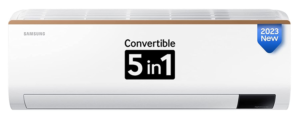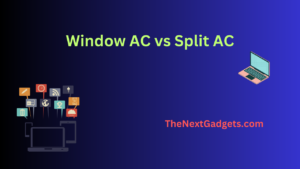Water leakage from a split air conditioning (AC) unit can present a frustrating challenge as it not only impacts the performance of your AC but may also lead to damage in your home. If you observe water dripping or pooling around your split AC, it is crucial to promptly address the issue to prevent further complications. This article aims to explore common causes of water leakage from a split AC and provides actionable steps for resolving this concern.
Table of Contents
![How to Fix Water Leakage from Split AC [Guide]](https://thenextgadgets.com/wp-content/uploads/2023/07/How-to-Fix-Water-Leakage-from-Split-AC-Guide-1024x576.png)
Understanding the Cause of Water Leakage
Water leakage from a split AC can occur due to various reasons. It is crucial to understand the underlying causes to effectively resolve the issue. Here are some common causes of water leakage:
Condensate Drain Blockage
The condensate drain serves the important role of eliminating accumulated condensation during the cooling process. However, if this drain becomes obstructed by dirt, dust, or debris, it can lead to water backup and subsequent leakage from the AC unit.
Improper Installation
Improper installation of the split AC unit can result in water leakage. This can happen if the unit is not leveled or if the drain pipe is incorrectly installed, causing inadequate drainage and subsequent water leakage.
Low Refrigerant Levels
The AC system can experience freezing issues when there is not enough refrigerant. As a result, the evaporator coil becomes frozen. Once the coil thaws, excess water may escape from the AC unit through leakage.
Clogged Air Filters
Dirty or clogged air filters restrict the airflow within the AC unit, leading to a drop in temperature and excess condensation. This can cause water leakage if not addressed promptly.
Also Read BEST 1.5 ton 3 Star Split AC in India
Steps to Fix Water Leakage from Split AC
Follow these steps to fix water leakage from your split AC:
Step 1: Turn off the AC
Before attempting any troubleshooting or repairs, turn off the AC unit to ensure your safety and prevent further water damage.
Step 2: Check the Condensate Drain
Locate the condensate drain and inspect it for any visible blockages or obstructions. Use a flashlight to get a clear view. If you notice any debris or buildup, proceed to the next step.
Step 3: Clear the Drain Pipe
To easily clean the condensate drain pipe and ensure proper drainage, follow these steps. First, grab a stiff brush or small pipe cleaner. Carefully use it to remove any clogs or blockages from the pipe. Make sure there are no obstructions hindering the flow. By doing so, you can keep the pipe free for
Step 4: Inspect the Installation
Ensure the installation of your split AC unit is properly checked. Make sure to level the unit and ensure correct connection and positioning of the drain pipe for proper drainage. If necessary, adjust the unit or seek professional assistance for reinstallation.
Step 5: Check Refrigerant Levels
If the refrigerant levels are low, it can cause water leakage. We recommend reaching out to a professional HVAC technician for an inspection of the refrigerant levels and a potential system recharge if needed.
Step 6: Clean or Replace Air Filters
Inspect the air filters of your split AC and clean or replace them if they are dirty or clogged. Clean filters allow proper airflow, preventing the coil from freezing up and reducing condensation.
Also Read 1 Ton AC vs 1.5 Ton AC? Which one is Right for you?
Preventive Measures to Avoid Water Leakage
To prevent water leakage from your split AC in the future, consider the following tips:
- Regularly clean and maintain the condensate drain line to prevent clogs.
- Keep the area around the AC unit clean and free from debris.
- Schedule annual maintenance by a professional HVAC technician to ensure optimal performance and catch any potential issues early on.
- Replace air filters as recommended by the manufacturer to maintain proper airflow.
- Ensure proper installation of the AC unit, including correct leveling and secure connection of the drain line.
Conclusion
Water leakage in an AC unit is a frequent issue that can be effectively resolved with the right knowledge and steps. By understanding the causes, following troubleshooting procedures, and implementing preventive measures, individuals can successfully address water leakage in their AC units while ensuring optimal performance.
If you come across complex issues or feel uncertain about troubleshooting steps, it is advisable to seek professional assistance from HVAC technicians. Having this comprehensive guide on fixing water leakage from a split AC, take the necessary steps to address the problem and enjoy a properly functioning cooling system.
Also Read How to Hide or Decorate Split AC Piping
FAQs (Frequently Asked Questions)
Is it normal for a split AC to produce condensation?
Yes, condensation is a normal byproduct of the cooling process in a split AC. However, excessive condensation or water leakage indicates an issue that needs to be addressed.
Can I fix water leakage from my split AC by myself?
Basic troubleshooting steps such as cleaning the drain pipe or air filters can be performed by homeowners. However, for complex issues or refrigerant-related problems, it is best to seek professional assistance.
How often should I clean or replace the air filters?
The frequency of cleaning or replacing air filters depends on factors like usage, indoor air quality, and manufacturer recommendations. It is generally advised to clean or replace filters every 1-3 months.
Why is it important to maintain the condensate drain and drain pipe?
Regular maintenance of the condensate drain and drain pipe ensures proper drainage, preventing water leakage and potential damage to your AC unit and surrounding areas.
Can water leakage from a split AC cause electrical hazards?
Yes, water leakage from an AC unit can pose electrical hazards. It is crucial to address the issue promptly and ensure the safety of the electrical connections around the AC unit.


